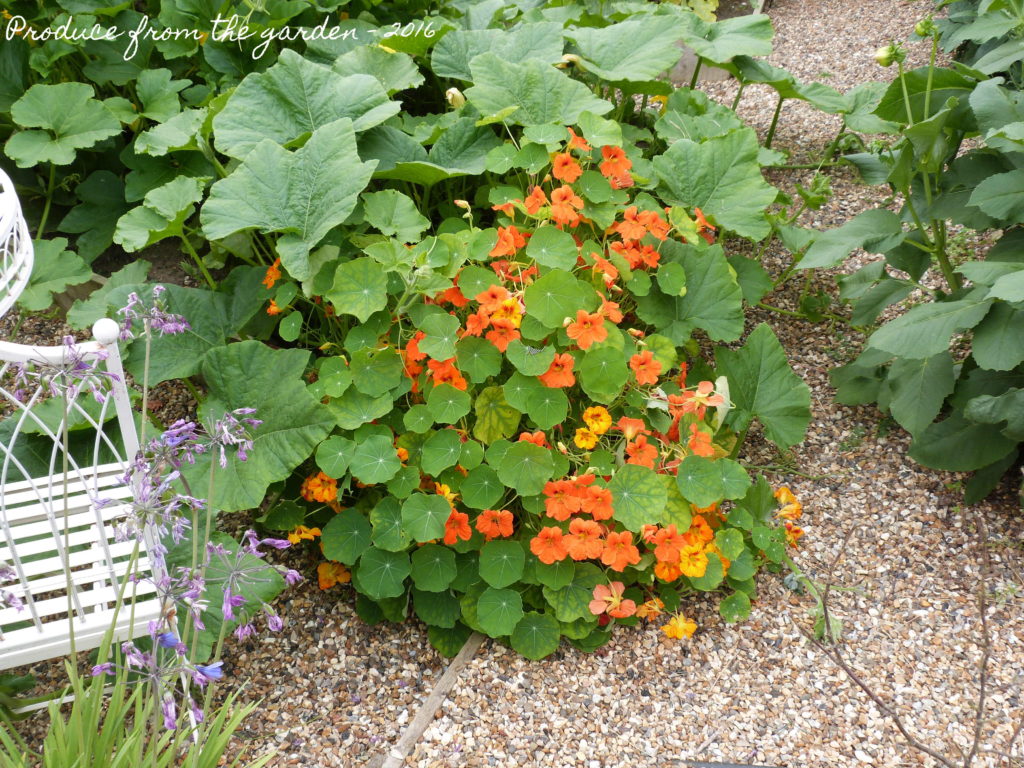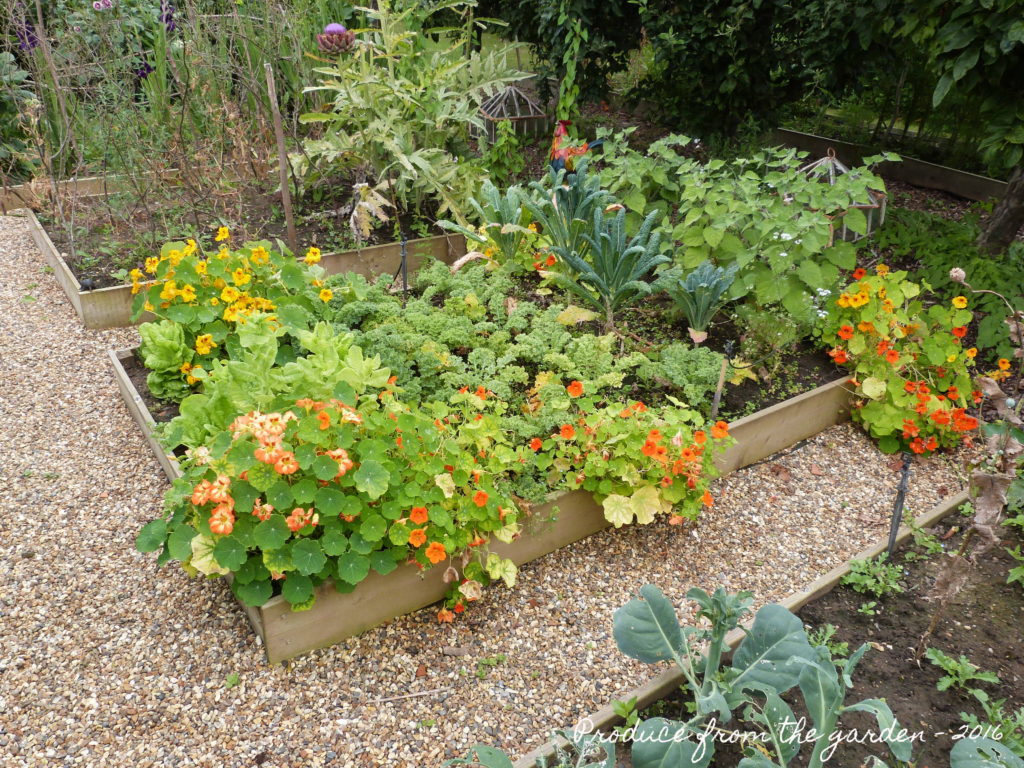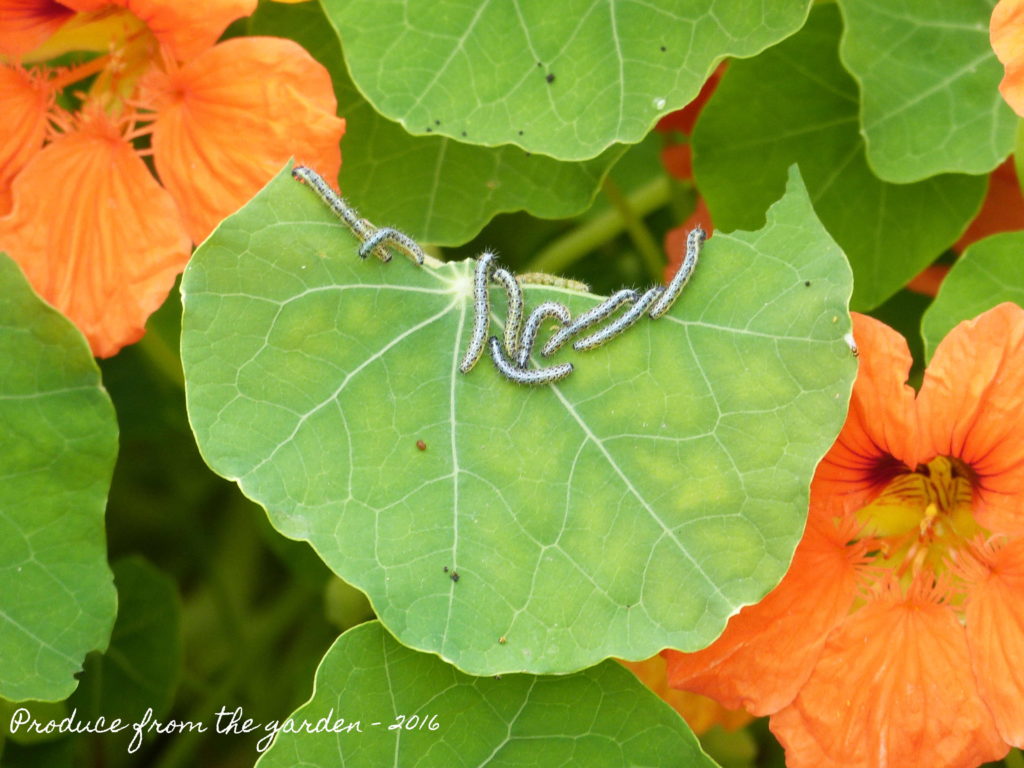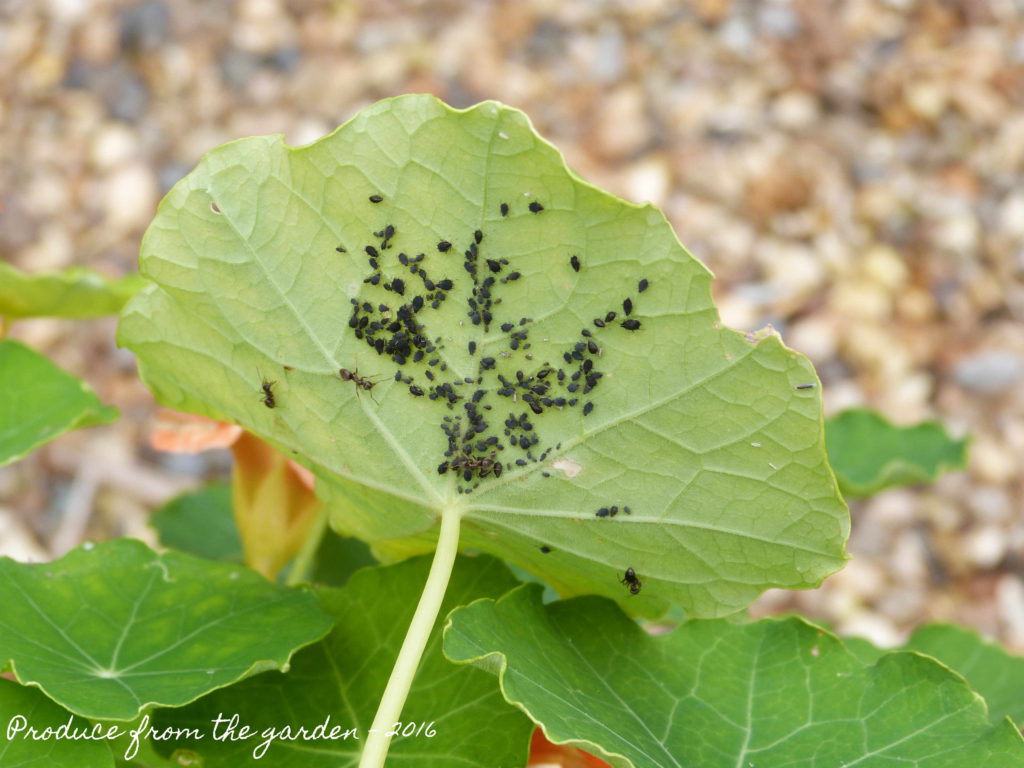I love bunting; it’s the perfect summer garden accessory. It makes me think that every day’s a party, adding fun, colour and movement to the garden as it flaps in the wind. It also makes an atmospheric interior decoration. I made some bunting from deck chair material to hang in our newly renovated summer house, as mentioned in my last posting here’s an easy peasy guide to making bunting:
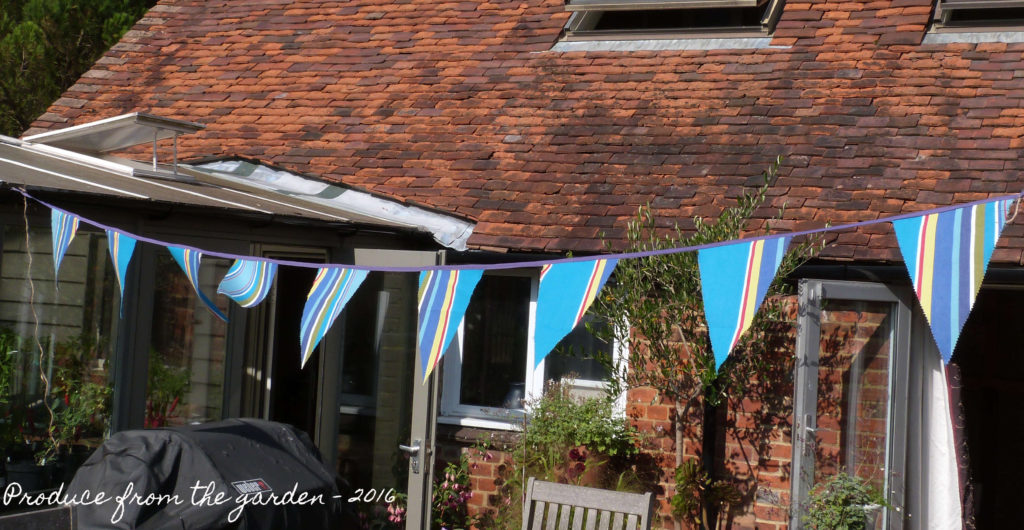 Bunting hanging over our patio
Bunting hanging over our patio
First of all choose your bunting fabric. Select a heavier weight curtain or upholstery fabric, this will hang well outside. Another tip is to select a reversible fabric. If your bunting is hanging outside it will need to look good from both sides. I chose deck chair material for its thick heavy weight, and it has no ‘wrong’ side.
To make the bunting you will need:
- Sewing machine
- Measuring tape
- 5 meters of cotton bias binding tape – I bought mine very cheaply off Amazon
- Cotton – In a colour to complement the bias binding tape
- Pins
- Sharp Scissors
- Sharp Pinking Shears – I learnt the hard way, blunt pinking shears that have been used to cut up Christmas cards don’t work!
- Ruler
- Pen
Measure a 28cm width of Fabric, mark with a pen, this will become the length of each bunting flag:
Along the 28cm pen line you’ve just drawn, mark out 22cm, this will become the top width of the flag. Repeat the 22cm marks all along the width of the fabric:
At the bottom of the fabric width measure 11cm and mark, and then measure 22cm, mark and continue repeating the mark every 22cm:
With a ruler and pen, mark out the flags using the guide marks you’ve just made:
You then have a width of fabric marked out into triangles (the flags) 28cm long and 22cm wide at the top:
Next, cut the top and bottom edge of the bunting with scissors, creating a 28cm band with drawn triangles inside:
Then cut the angled sides of the bunting flags with pinking shears. This gives a zig zag edge to the fabric which prevents the material fraying, and saves us a lots of time sewing!
One of the bunting flags ready for sewing to the binding bias. You will need 11 flags in total, always have an odd number of flags to ensure there is a central one.
Leave a 44cm length of binding bias tape at each end, then insert your flags into the binding bias tape and pin, leave a 17cm gap between each flag:
Pop in a pin to hold the binding bias tape together between each flag:
Finally machine sew the bias binding tape to your bunting flags, carefully removing the pins before you get to them:
And that’s all there is to it, easy peasy bunting!
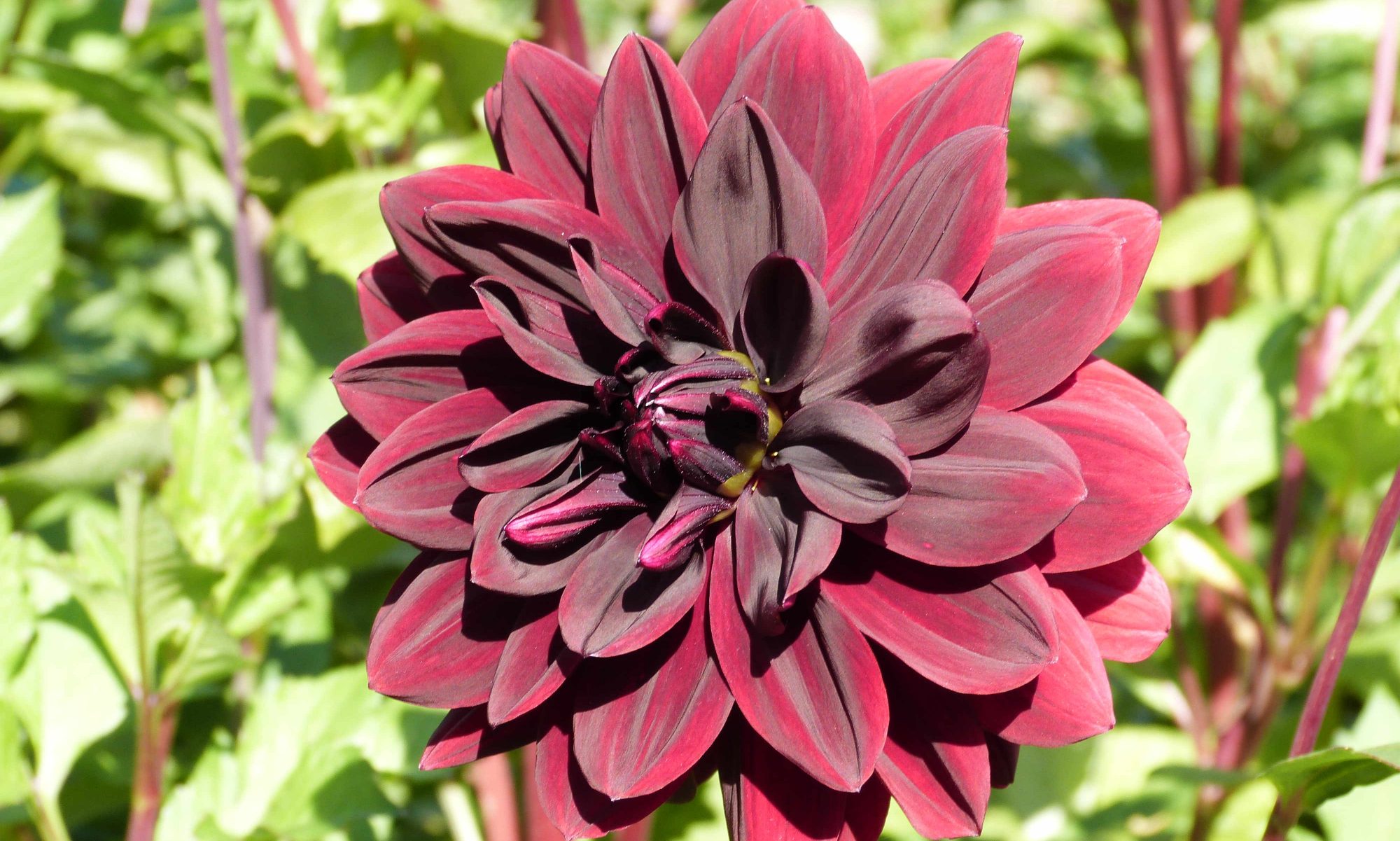

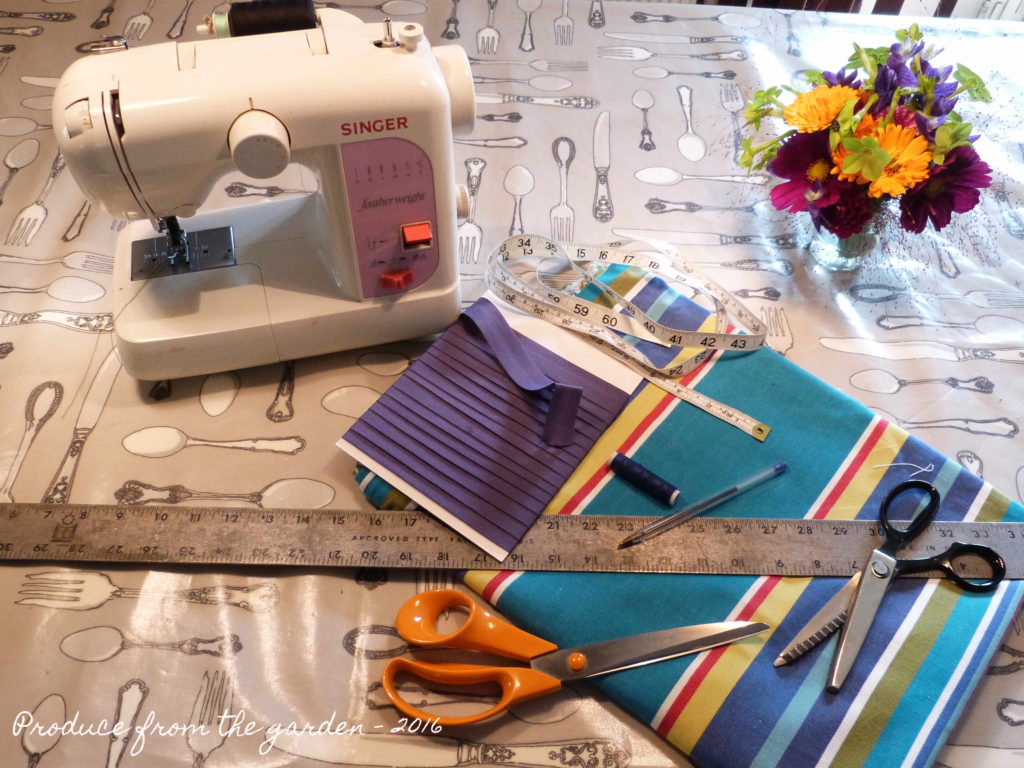
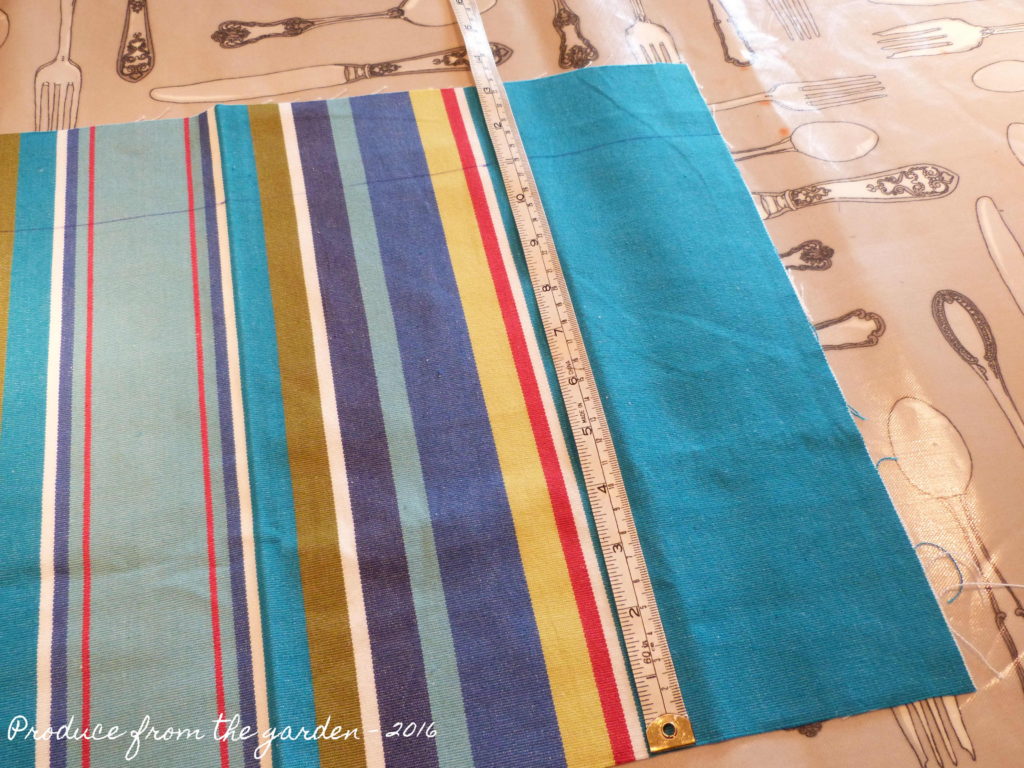
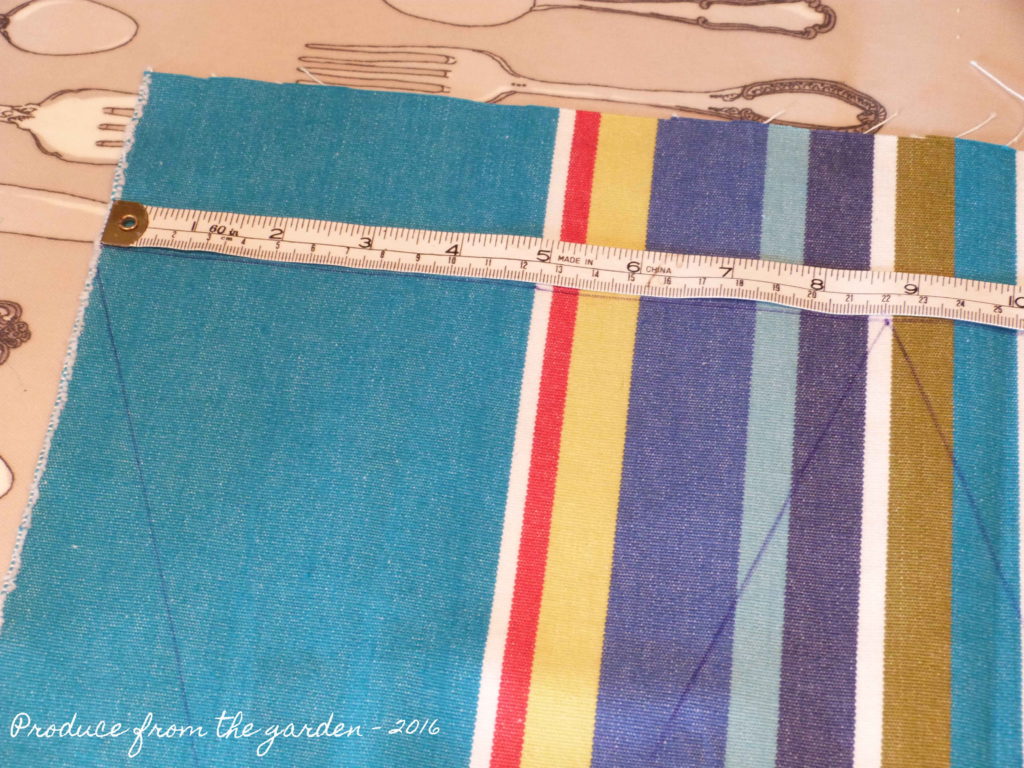
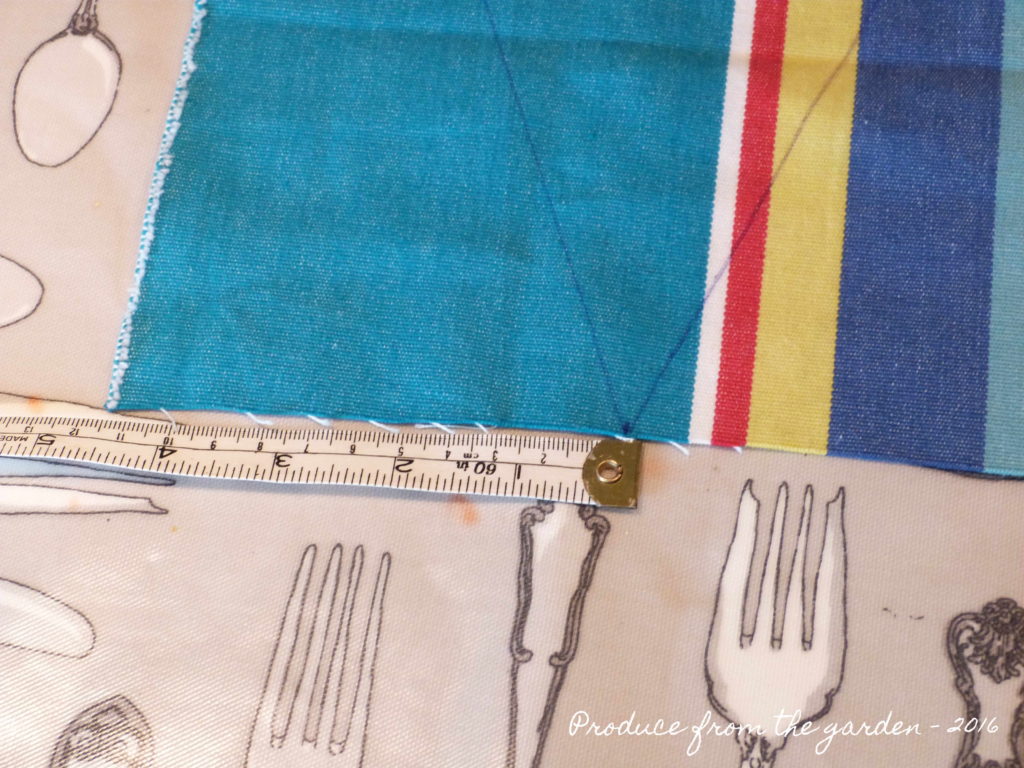
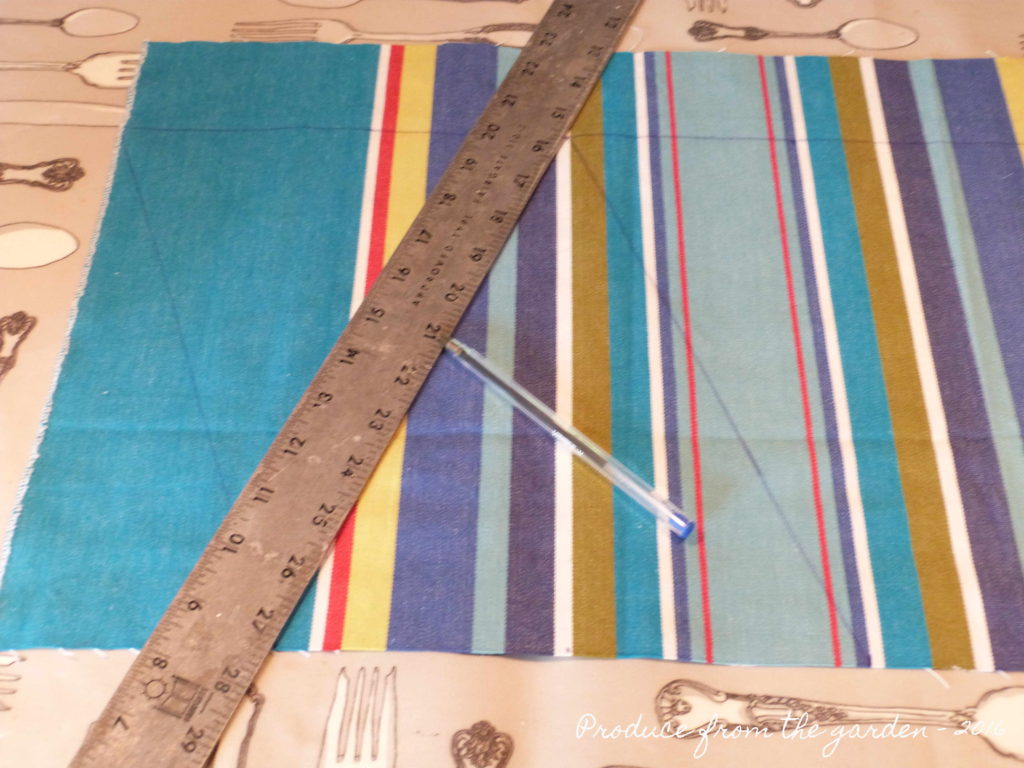
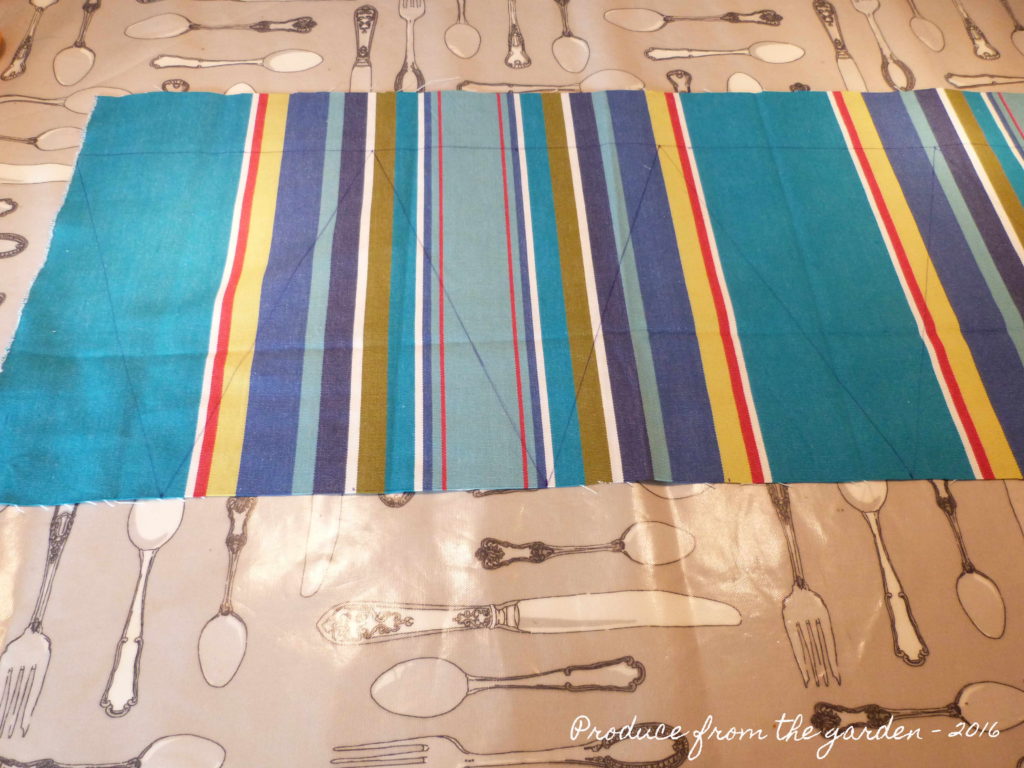
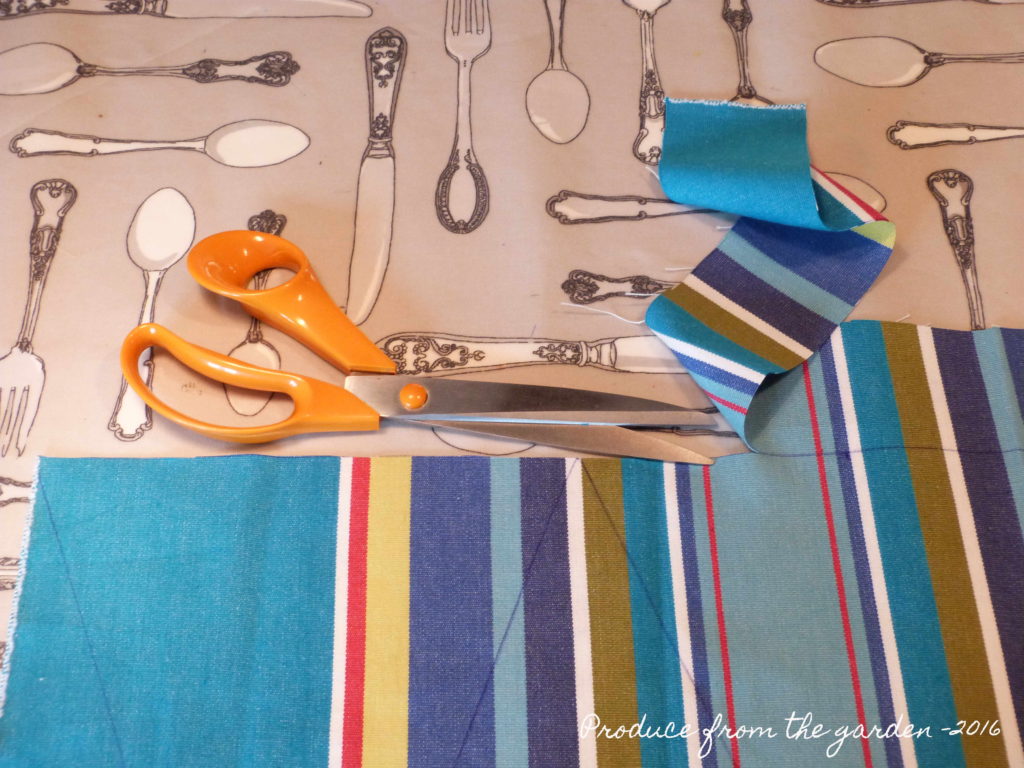
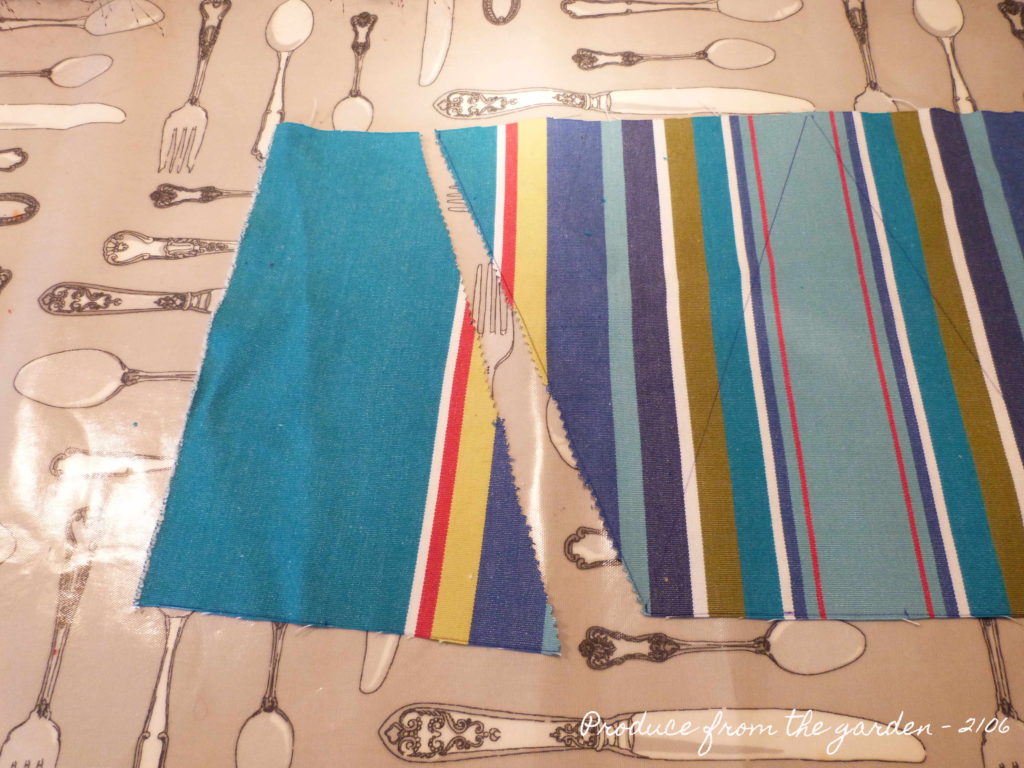
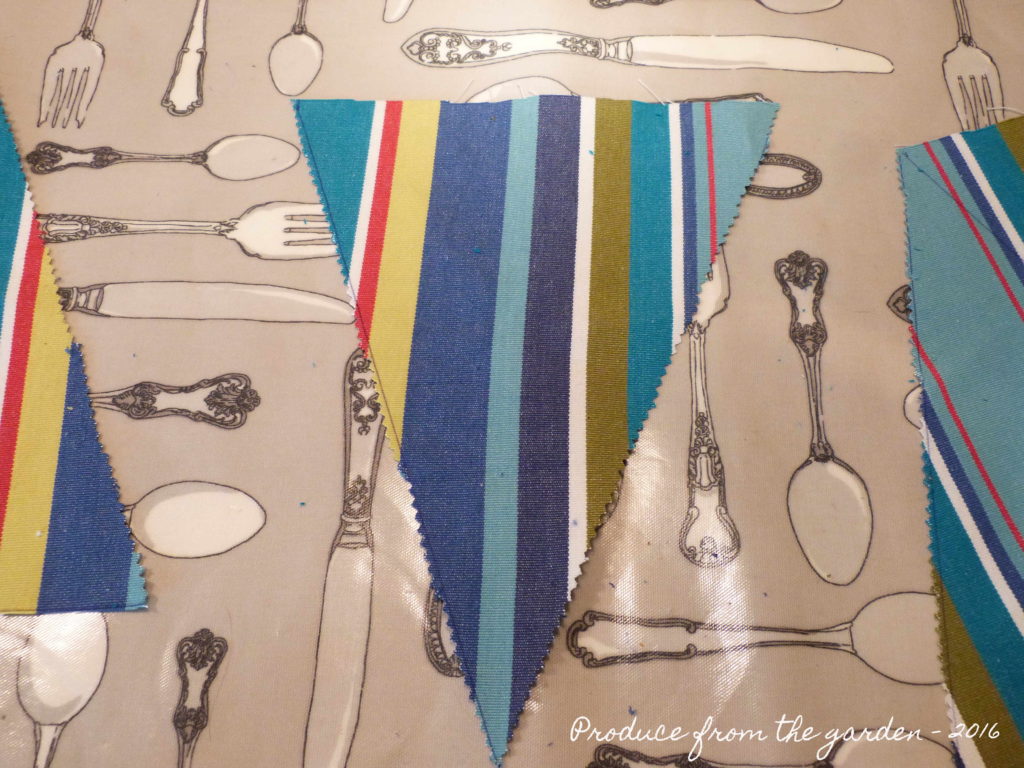
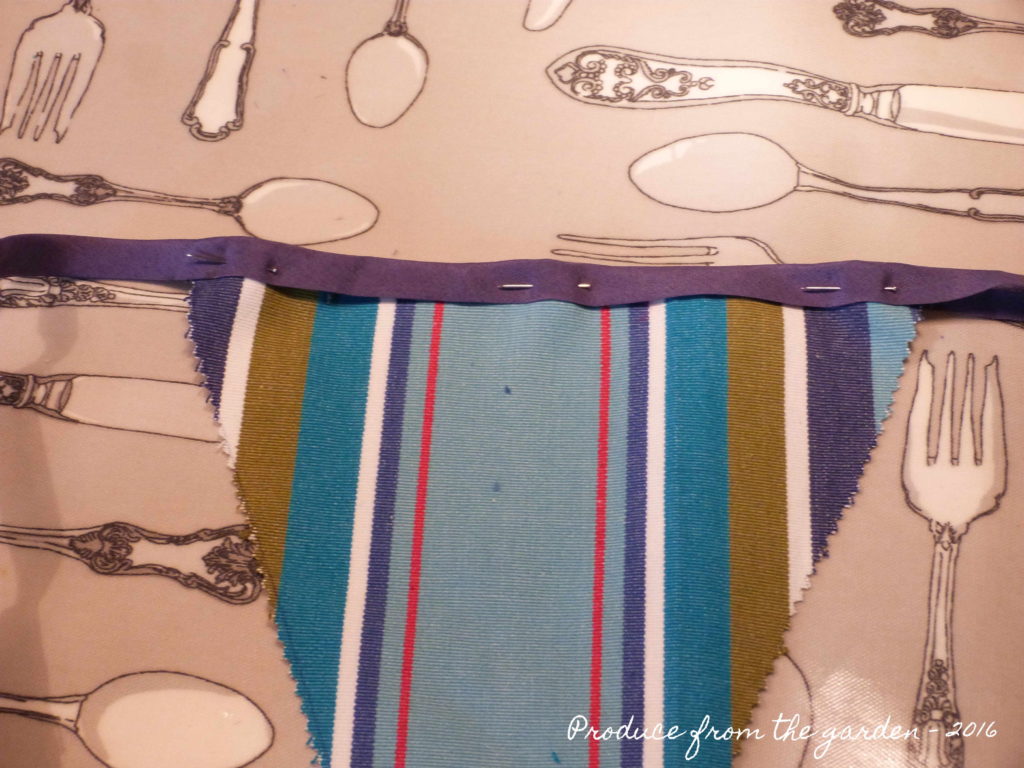
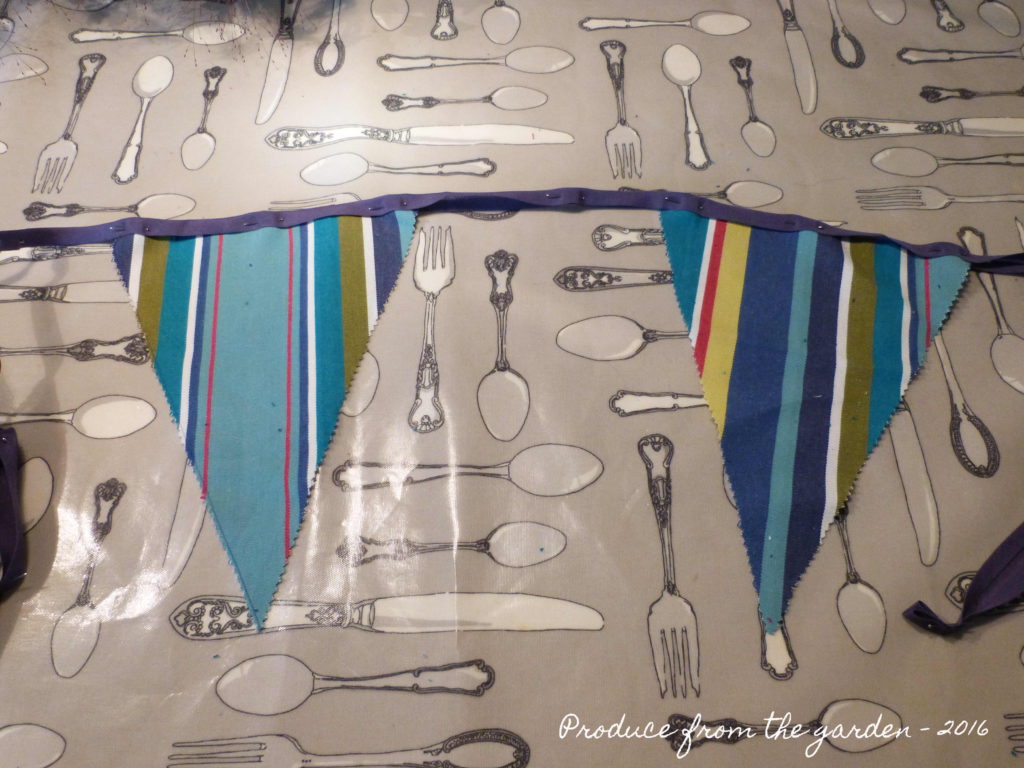
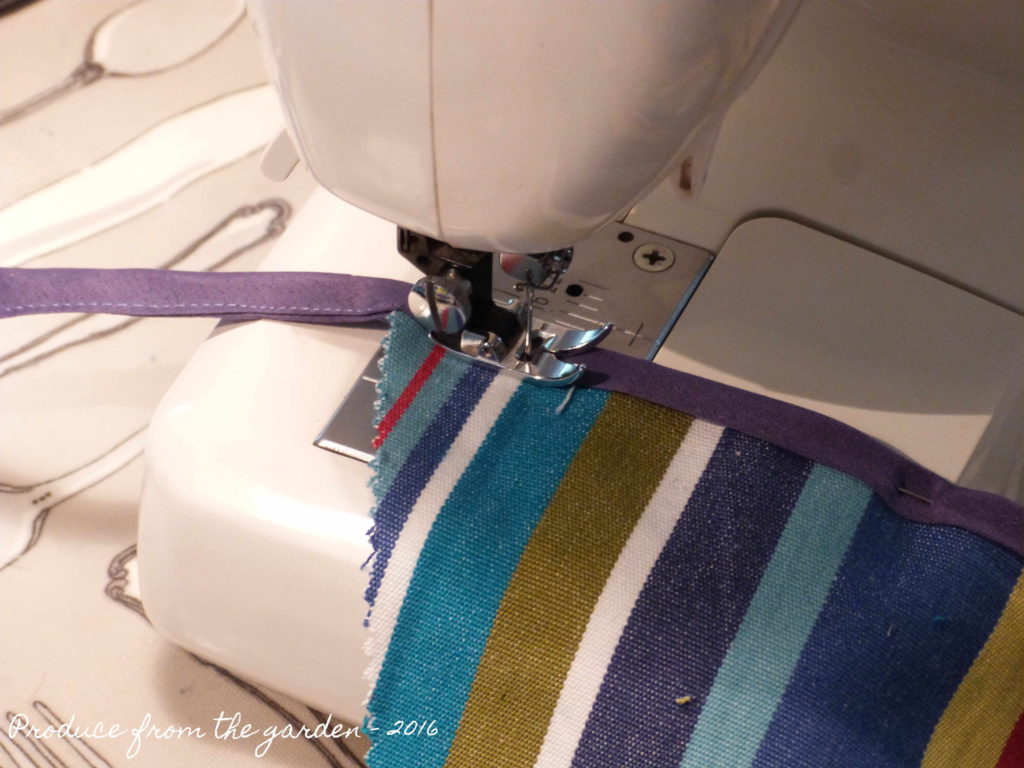
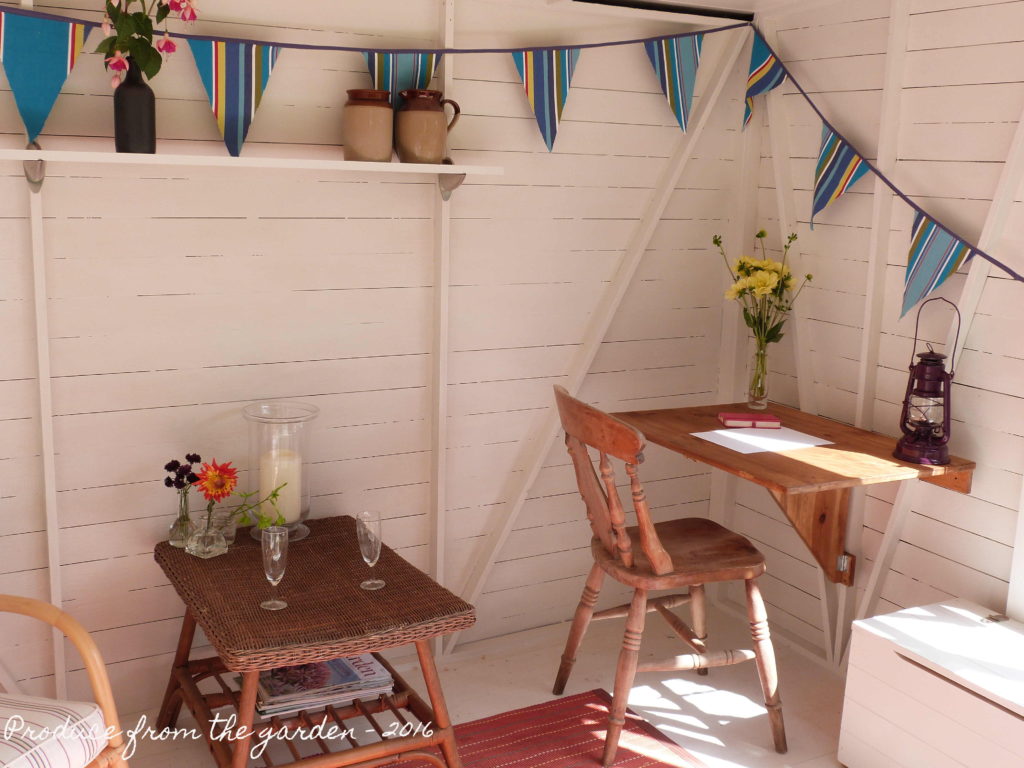
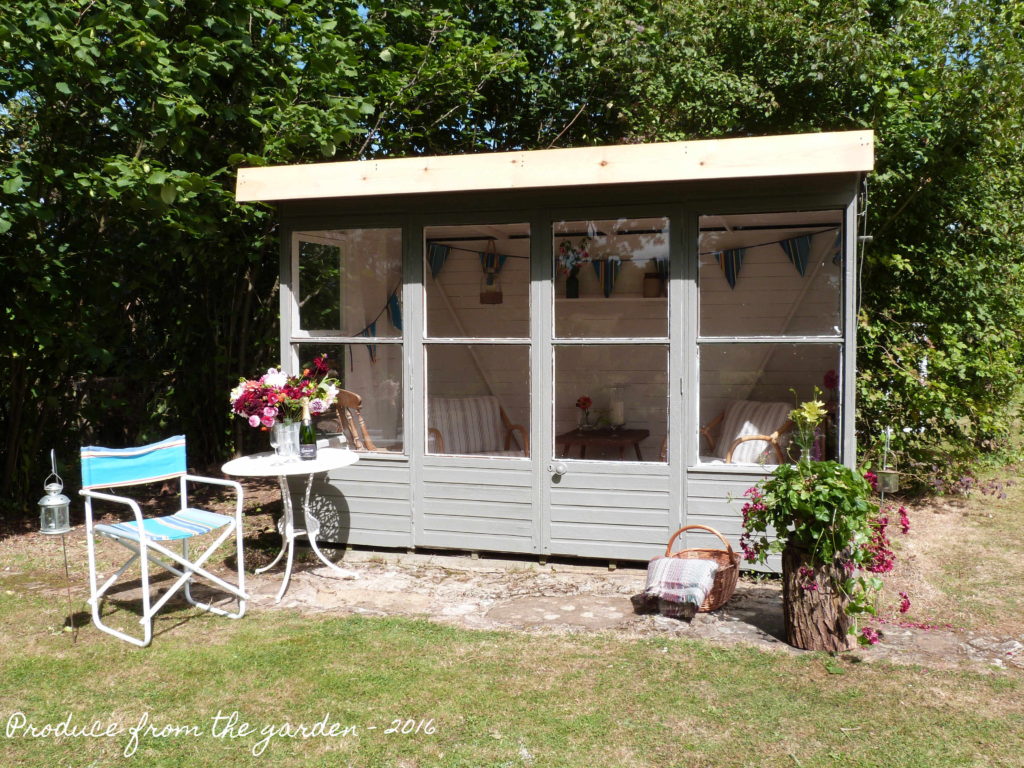
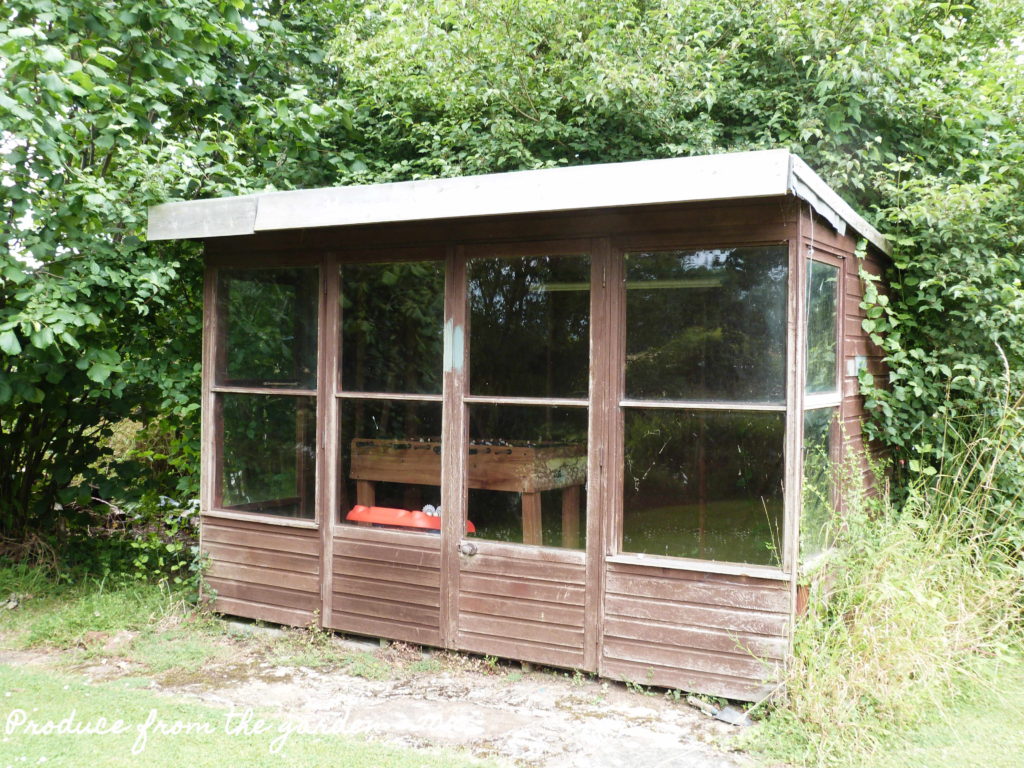
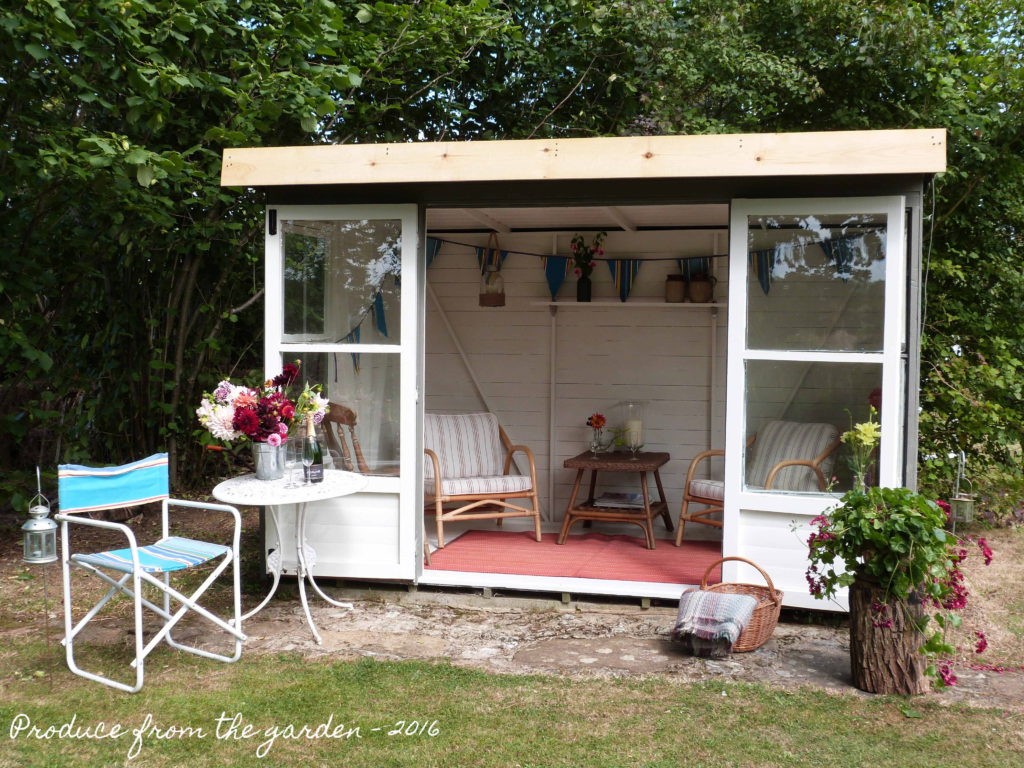
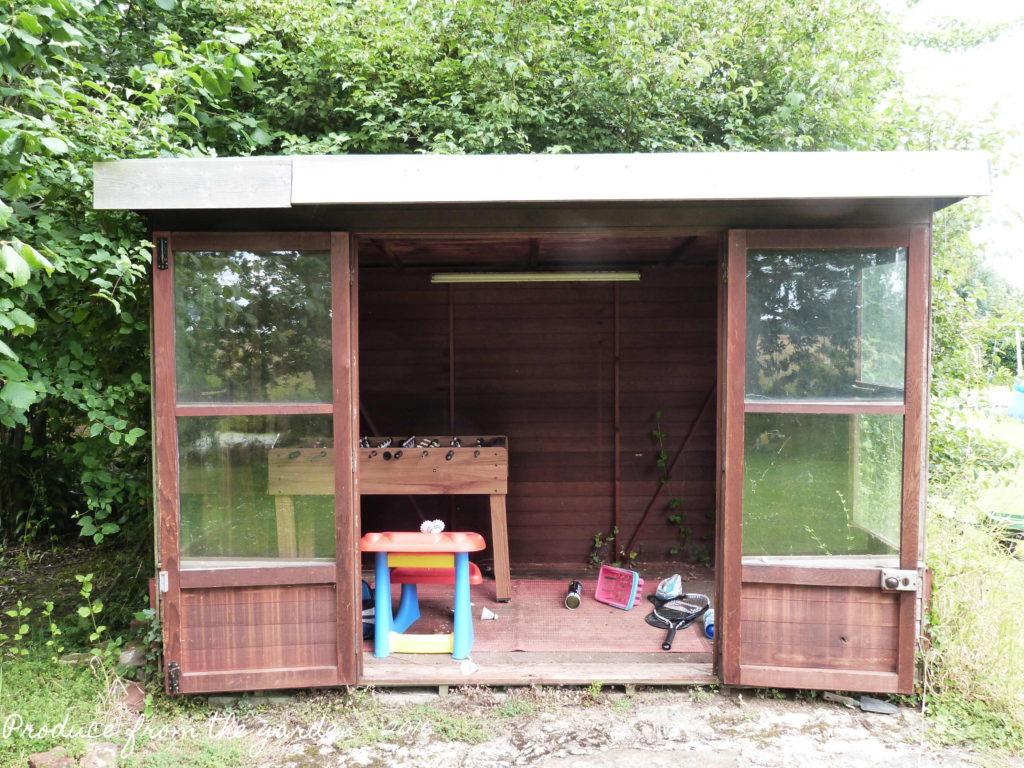
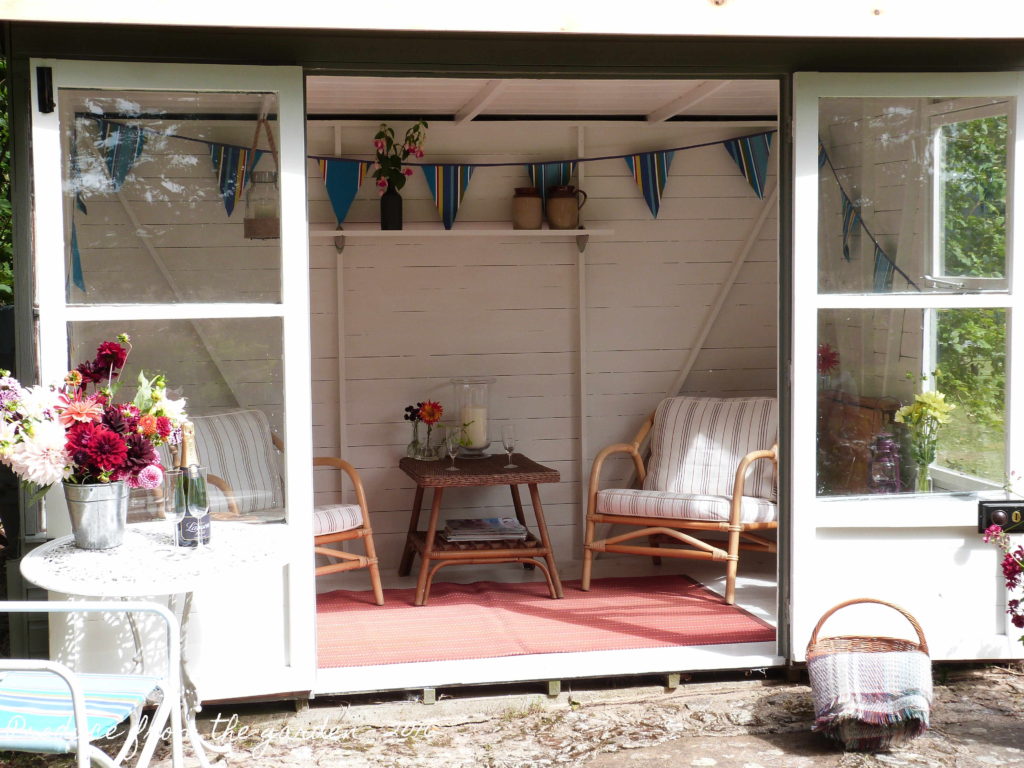
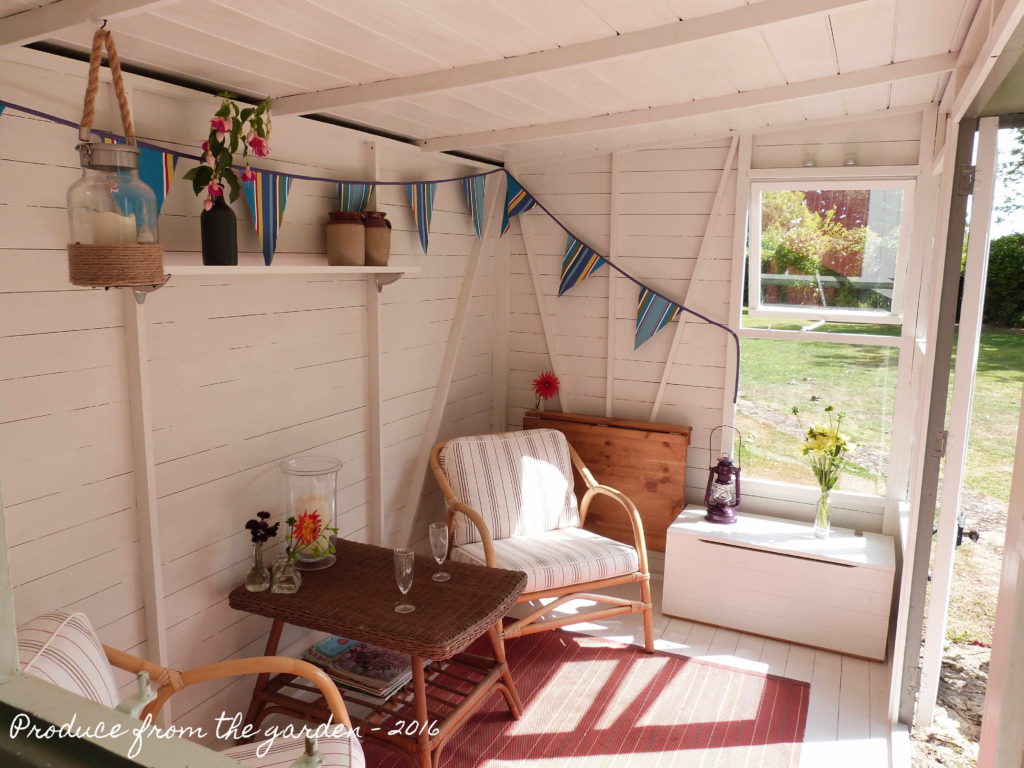
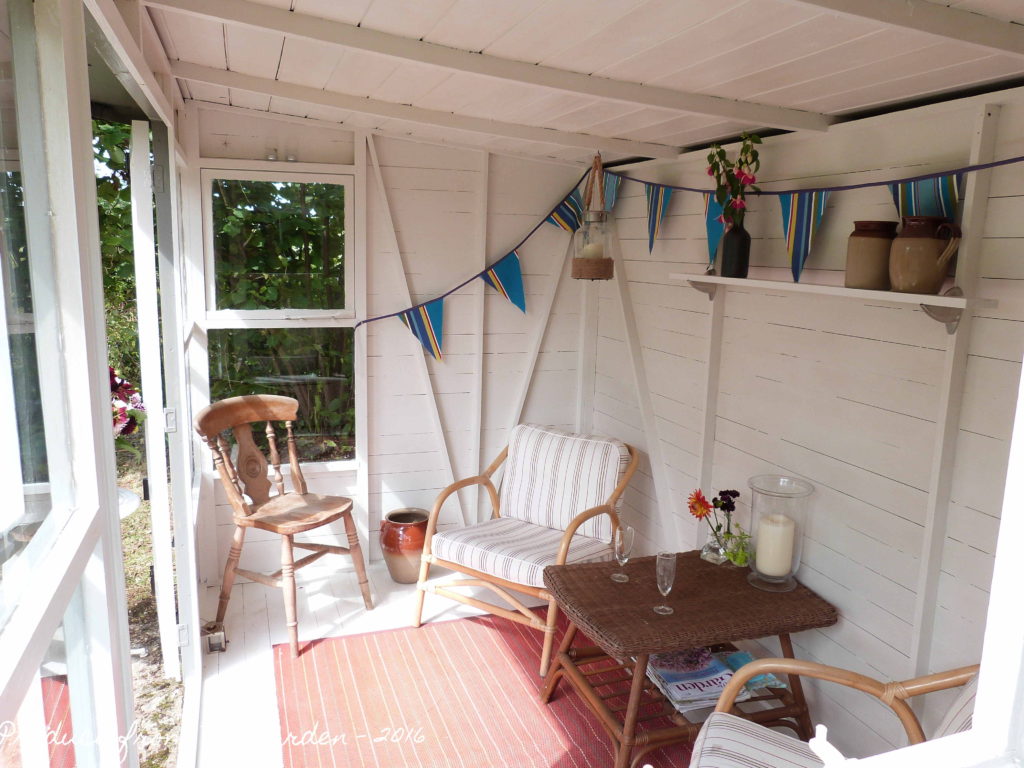
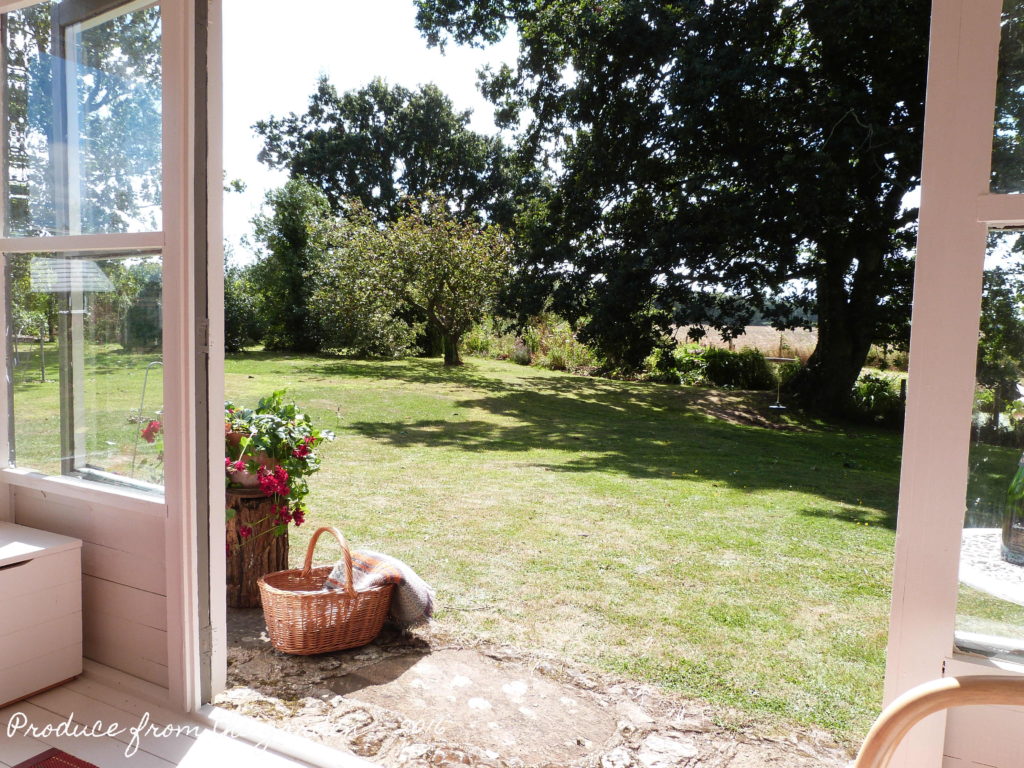
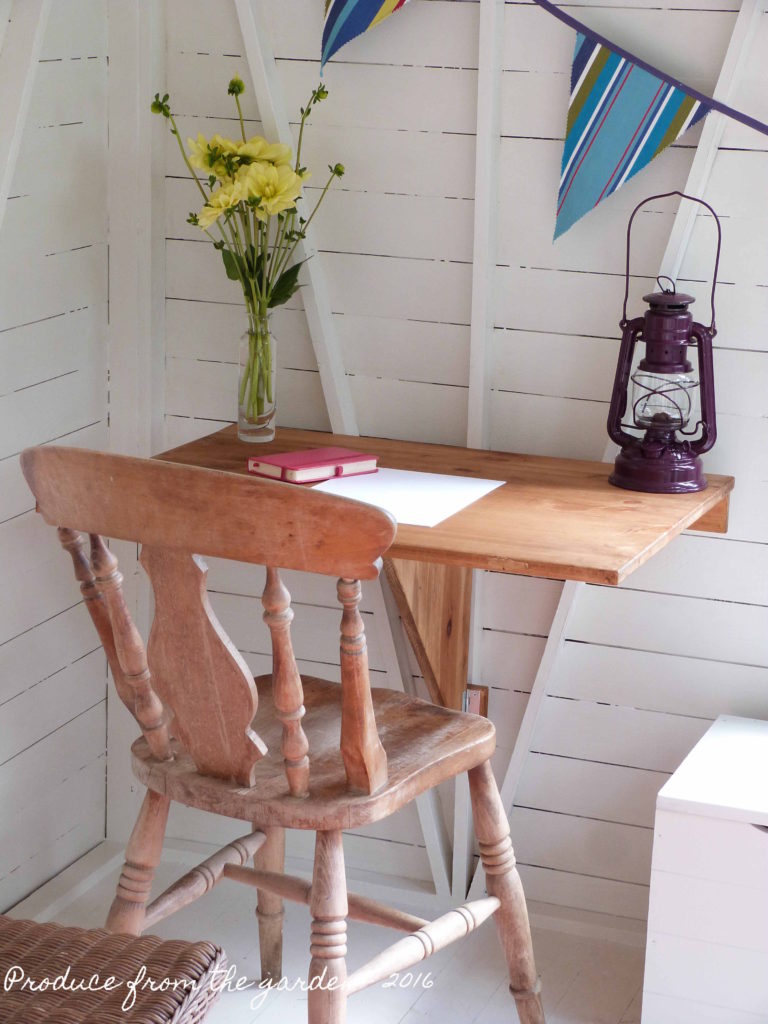
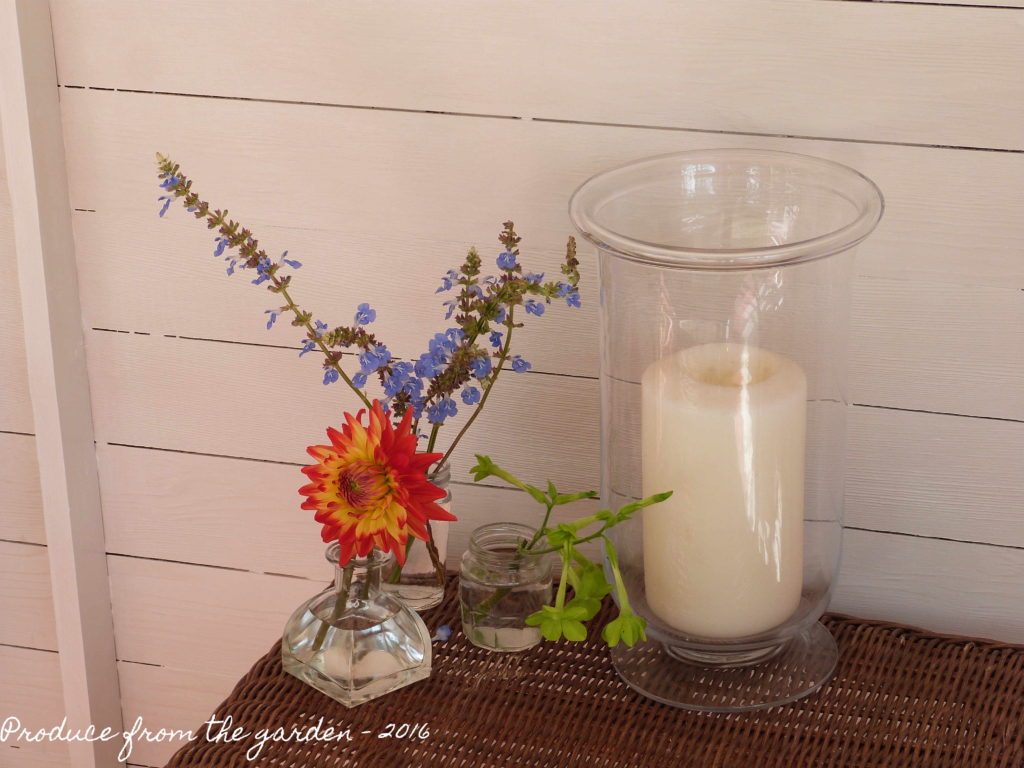
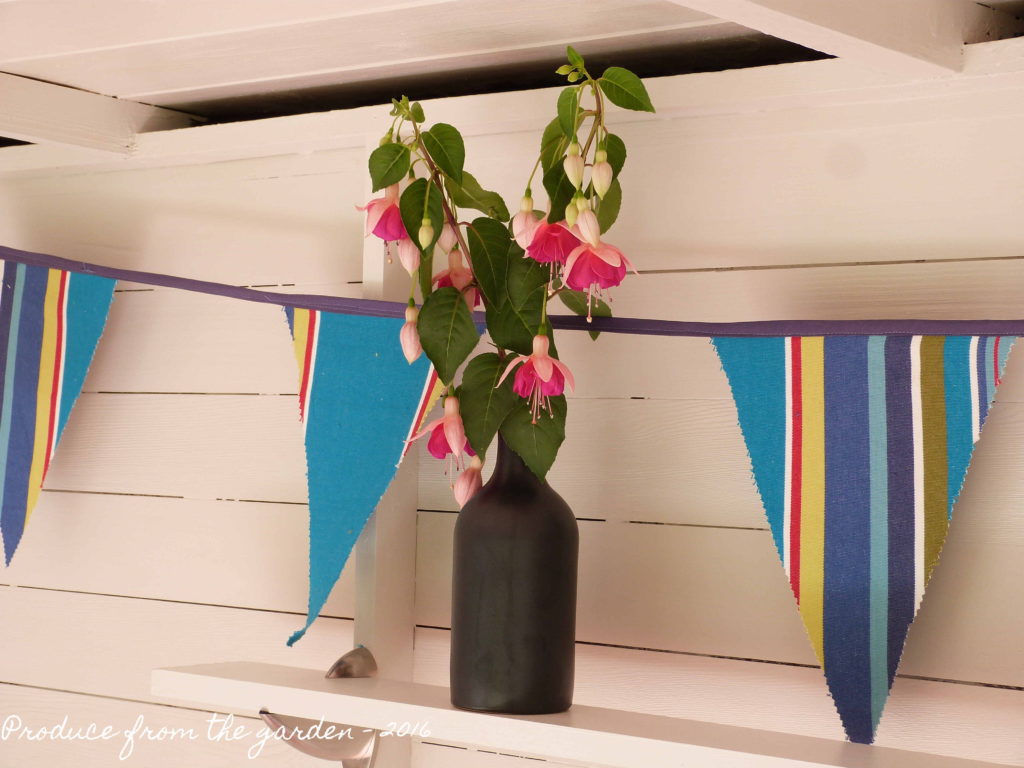
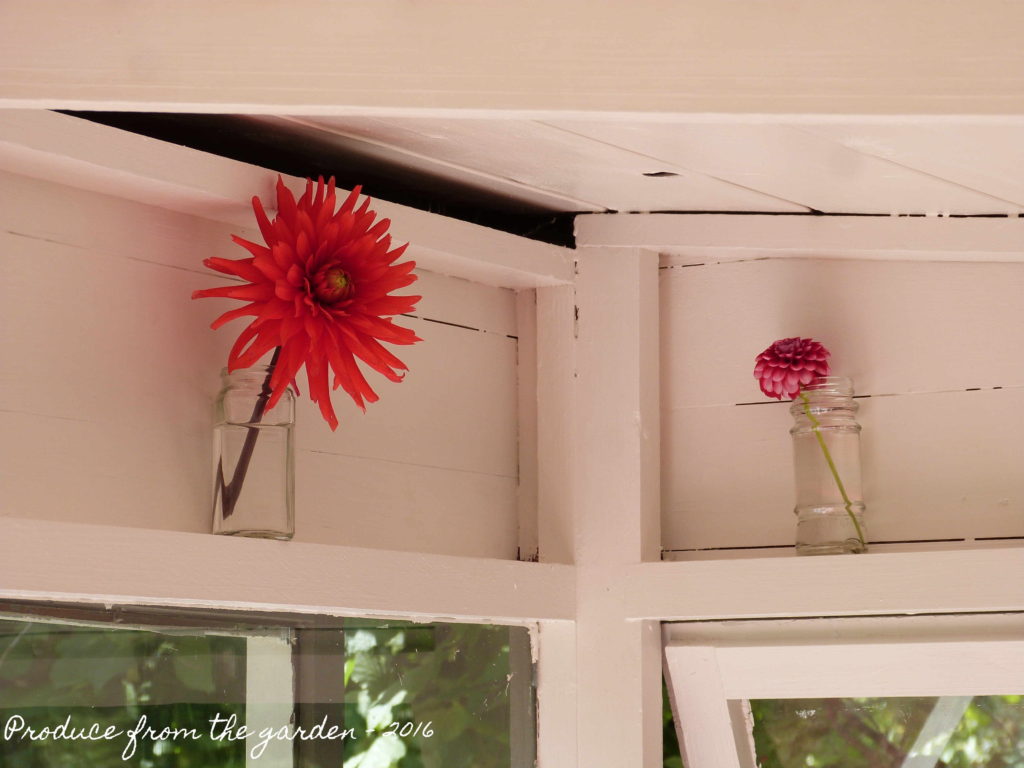
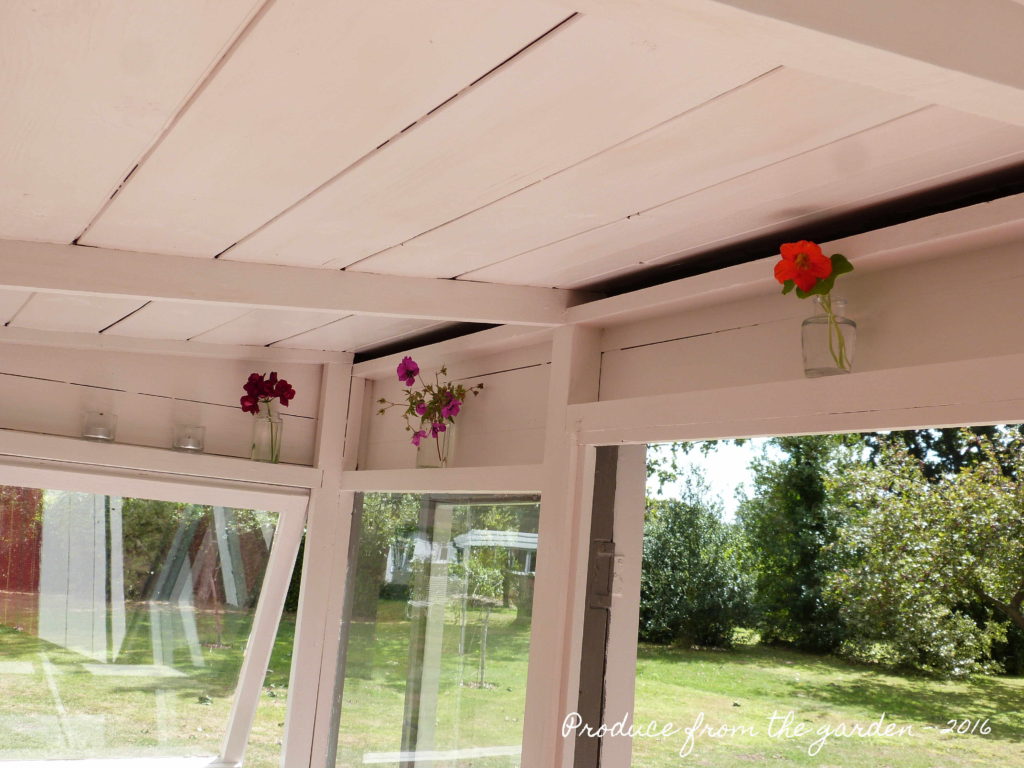
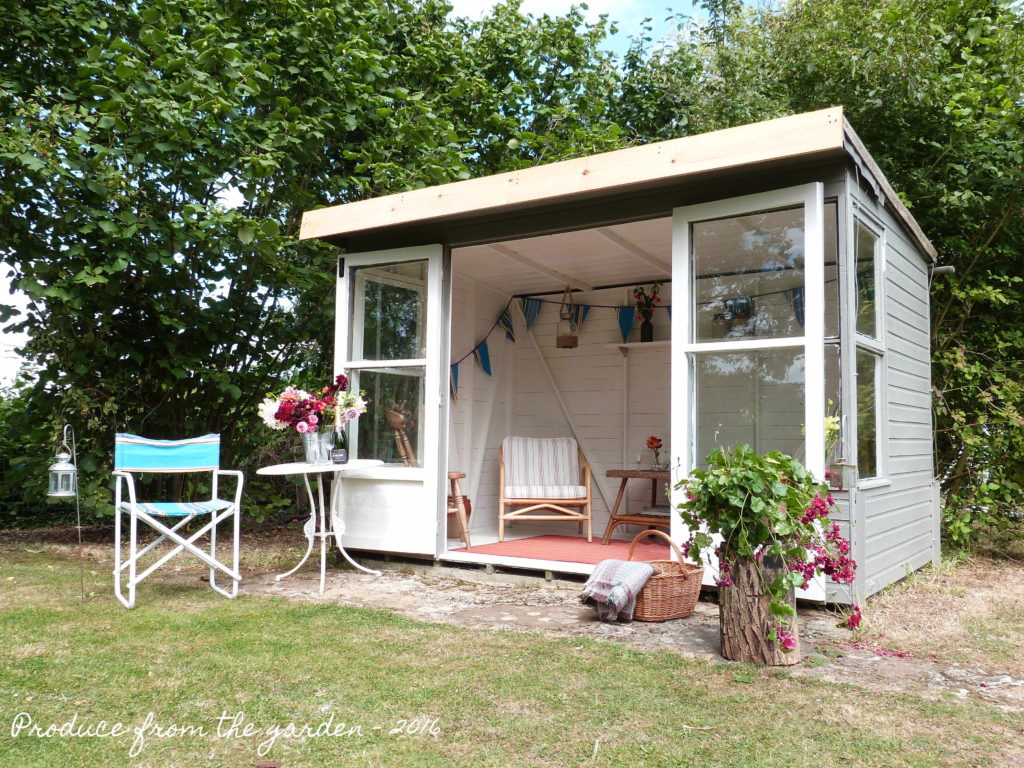
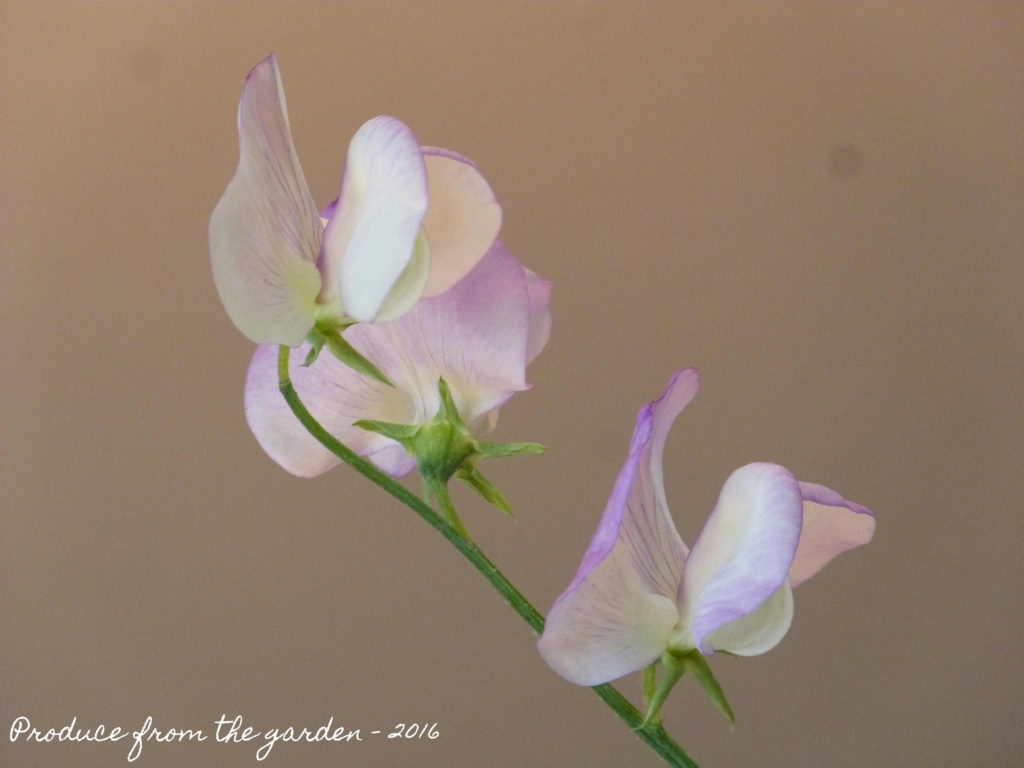
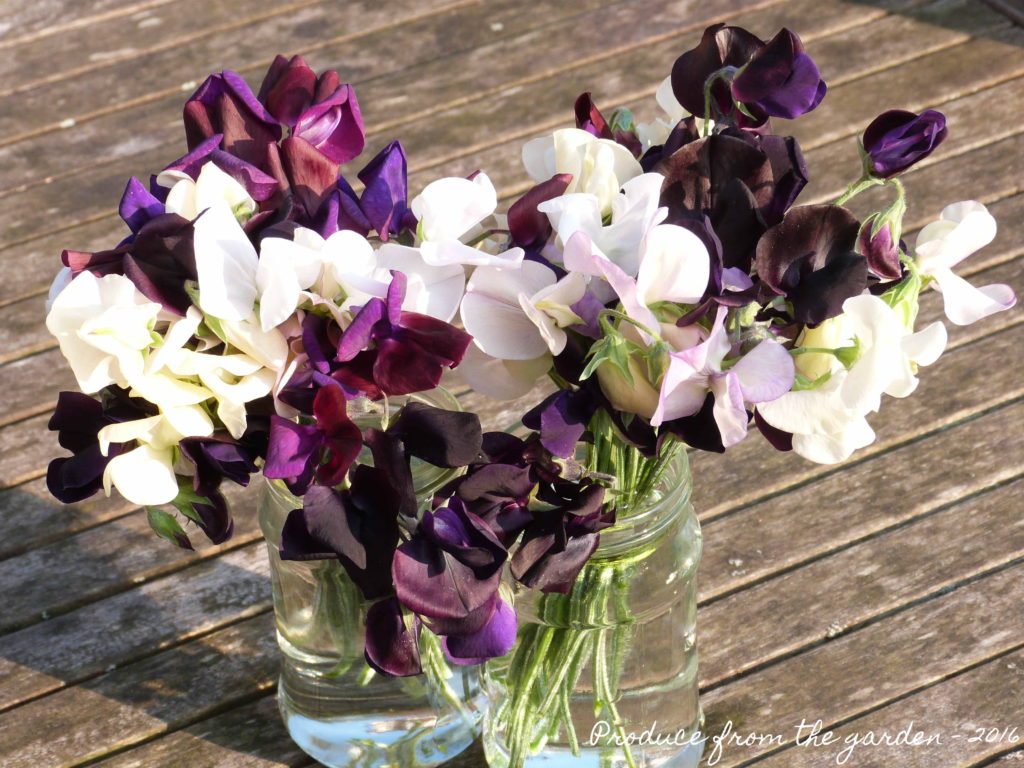
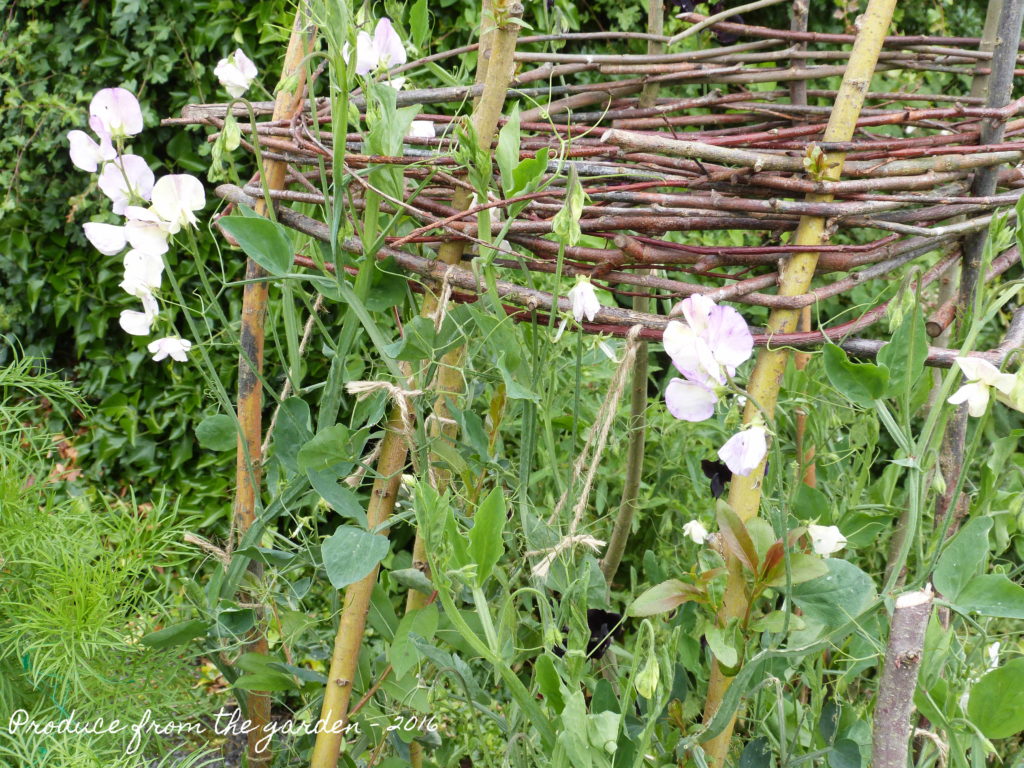
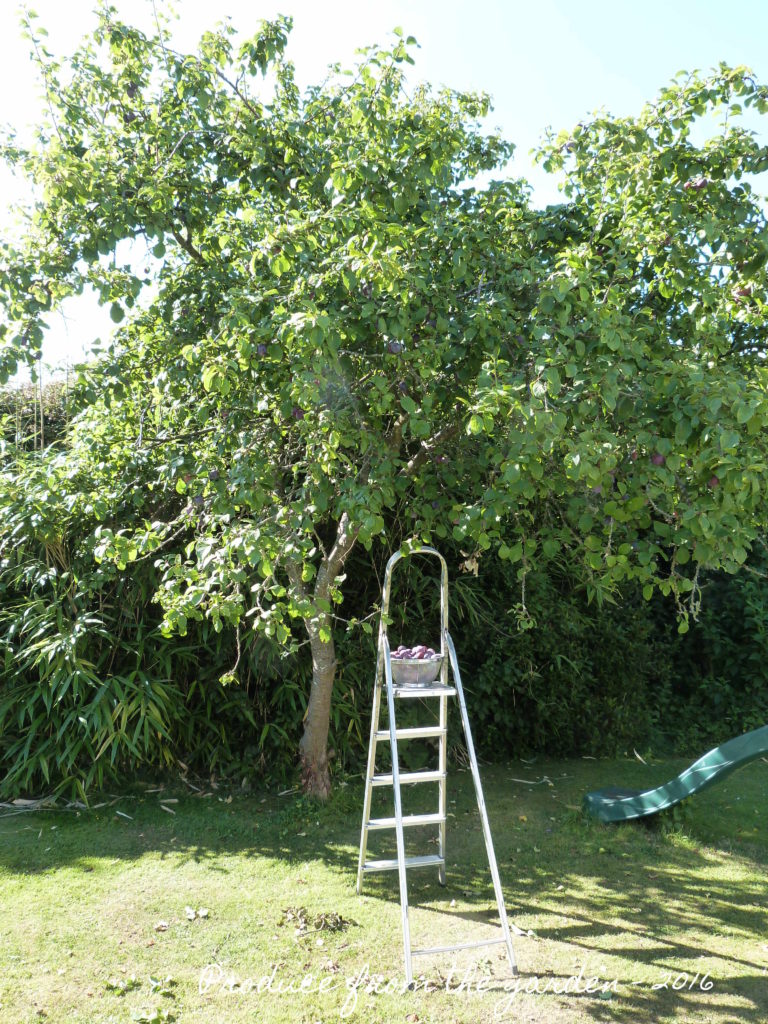
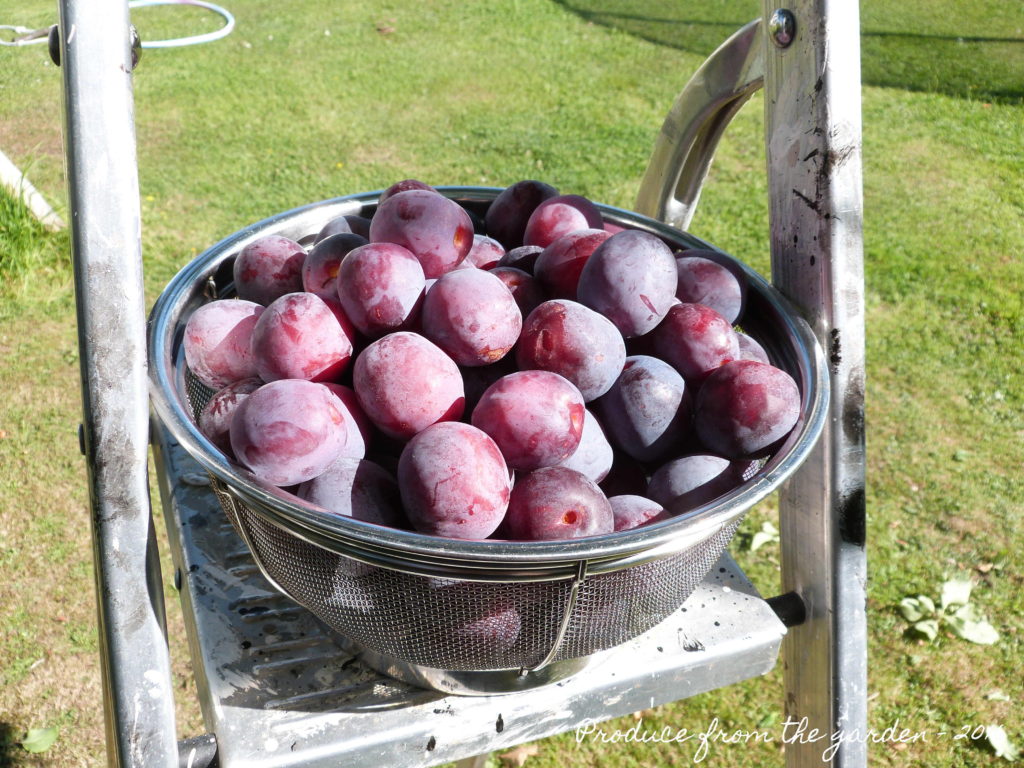 This afternoons plum harvest
This afternoons plum harvest